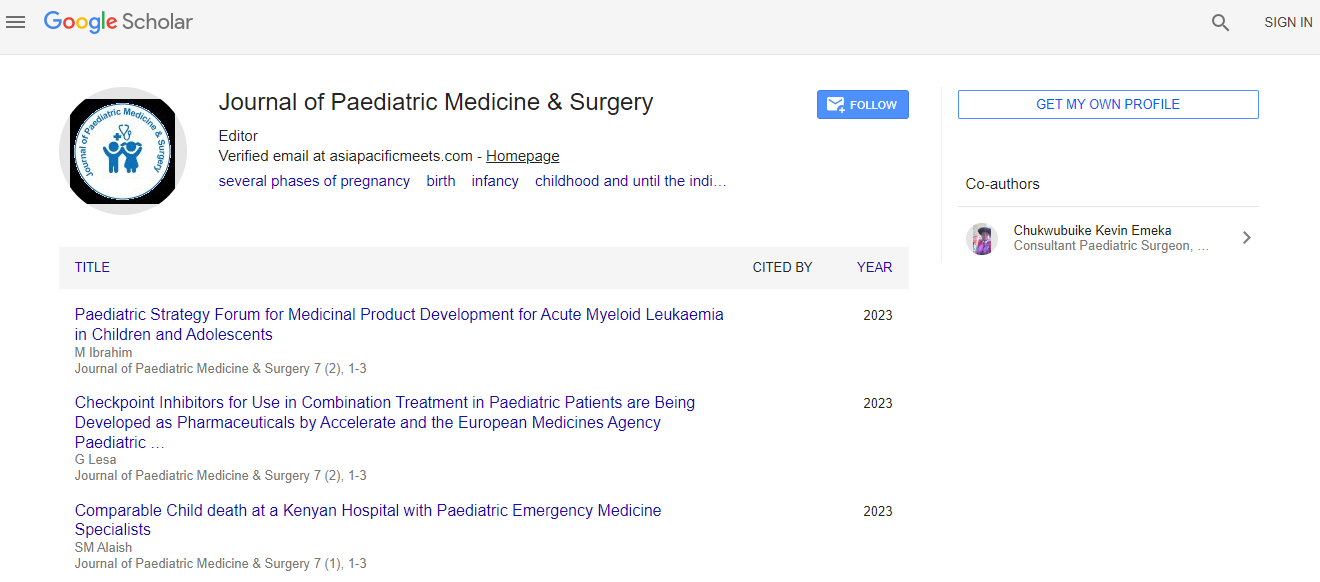Pediatrics & Neonatal Healthcare 2017: Infants, video viewing and learning - Shoshana Dayanim - Keiser University Shoshana Dayanim
*Corresponding Author:
Copyright: © 2017 . This is an open-access article distributed under the terms of the Creative Commons Attribution License, which permits unrestricted use, distribution, and reproduction in any medium, provided the original author and source are credited.
Abstract
There is no question that children today are immersed in technology. They are exposed to video and technology from the youngest ages, even before they can hold a device. There is solid proof that school and preschool aged children can study from quality television programming, however, the research concerning infants 18 months and younger is limited, offers little proof of possible benefits, and questions the adverse impact video may have on cognitive development. Despite the recommendations from the American Academy of Pediatrics that children younger than 18 months should refrain from screen media, with the exception of video chatting, videos targeted toward infants continue to saturate the market. Several of these videos purport to enhance infant vocabulary and language development. Because the use of baby signs improves infants’ communicative repertoire and appears to serve the same communicative functions as words for young children, baby signs offer the opportunity to inspect the efficacy of video instruction towards infant language development in a measured experiment.
In the current longitudinal experiment, we asked whether better-controlled exposure delivered exclusively through video would lead to any evidence of learning relative to a no exposure control condition, and if so whether there was evidence of a video deficit, a benefit for parental co-viewing or both. To ensure experimental control of exposure, we investigated infants’ ability to learn symbolic gestures, or baby signs instead of focusing on word learning. Baby signs also offer better experimental control of exposure because they are not routinely employed in everyday interactions with infants. Thus, by using signs in place of spoken words, we are able to assess the independent impact of video exposure on learning more directly. Baby signs are a strong test case because infants begin using words and signs at around the same time, shortly after their first birthdays and appear to use them for the same communicative purposes. The availability of numerous educational videos marketed towards infants that offer sign instruction enables us to systematically and ecologically investigate the impact of medium (video versus traditional instruction) and parental involvement (co-viewing versus alone) on infant learning.
High quality educational television programming can be an effective source of learning in preschool- and school-aged children. However, evidence supporting infants’ learning from purportedly educational videos is more equivocal. Several studies suggest a negative correlation between overall media exposure and measures of communicative development in infants under the age of 2, leading the American Academy of Pediatrics to renew their original recommendation (AAP, 1999) to avoid exposing children under 2 to television. Despite this recommendation, an estimated 90% of parents show television and videos to their infants including many “educational” videos targeting infants. Videos purporting to promote infants’ vocabulary and communicative development, in particular, have saturated the market.
Few studies support the notion that educational videos can facilitate language acquisition in infancy. There is partial indication that repeated exposure via video augments infants’ acquisition of words also heard in routine input, relative to infants who encounter the words in routine input alone. Also originate that recurrently pairing words and shapes over a period of 15 days enables toddlers as young as 18 months to identify which shapes correspond to particular words. There is slight evidence that children learn from infant-oriented educational videos and television programming. This four week longitudinal experiment investigated 15-month-olds’ (N=92) ability to learn ASL signs (e.g., patting head for hat) from at-home viewing of instructional video, either with or without parent. Forced choice, elicited production, and parent report measures indicate learning across all three exposure conditions, with a trend towards more robust learning in the parent support conditions, regardless of medium. There were no differences between experimental and control conditions in the acquisition of corresponding verbal labels. This constitutes the first experimental evidence of infants’ ability to learn expressive communication from commercially available educational videos.
This talk will provide a brief overview of the existing research on the impact of video viewing on infant cognitive development, and will focus on the findings of a four-week longitudinal experiment that investigated 15-monthold’s ability to learn American sign language signs from at-home viewing of instructional video, either with or without parent support, compared to traditional parent instruction and a no-exposure control condition. Forced choice, elicited production, and parent report measures indicate learning occurred across exposure and testing conditions. This constitutes the first experimental evidence of infants’ ability to learn expressive communication from commercially available educational videos. These findings offer educators and physicians evidence based insights to help parents make the best choices available concerning infant screen time.

 Spanish
Spanish  Chinese
Chinese  Russian
Russian  German
German  French
French  Japanese
Japanese  Portuguese
Portuguese  Hindi
Hindi 